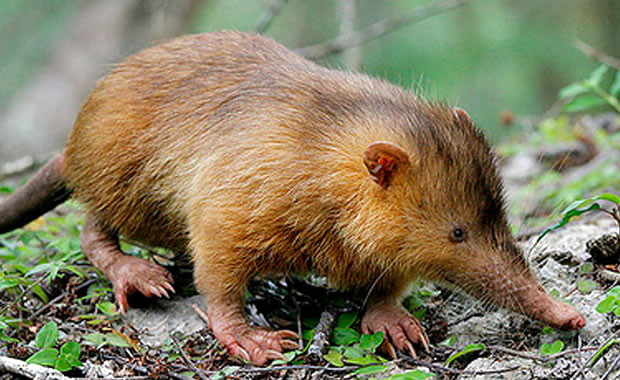
Seladang
|
Creature Profile
The seladang (also called the gaur or Indian bison) is found in the tropical woodlands of India, Indochina, and the Malay Peninsula and said to be the largest of all wild cattle (even bigger than the Asian wild buffalo and the American Bison). Adults grow to be very massive and muscular, reaching a shoulder height of about six feet. Males can weigh up to 2100 lb and females can weigh up to 1600 lb, and they can reach up to 11 feet in body length. There is a large hump at the shoulders, and they have sturdy legs and a narrow dewlap under the chin and between the front legs. Their heads are huge with a bulging forehead ridge between the horns. Both male and female have horns that grow up to 32 inches long and curve upwards. The coat of the seladang is short and dense, and its lower legs are lighter in color.
Seladangs are found in tropical savannah woodlands, tropical monsoon and dry forests, and lowland tropical rainforests. They prefer habitat with relatively undisturbed forest tracts, hilly terrain below 6000 feet, and where water and an abundance of coarse grasses, bamboo, trees and shrubs are available. Diet consists mainly of dry grasses, young shoots, and fruit. Seladangs prefer to be active in the morning and later afternoon and rest during the hottest time of the day. Males are solitary until the dry and mating seasons. During dry seasons, they gather into herds led by one single adult male and remain in small areas, and during monsoons they travel to the hills. Females give birth to one or two calves after a gestation period of 275 days.
Threats to the species include hunting (mainly for their horns), loss of habitat, and diseases that are transmitted by domestic cattle, such as rinderpest and foot-and-mouth disease. The seladang is legally protected throughout its entire range and also occurs in a number of protected areas. Also, there are several ongoing field survey and research programs in some countries.
Wikipedia Article

|
Wikipedia Article Copyright Notice: This article is licensed under the GNU Free Documentation License. It uses material from the Wikipedia article "Guar". |
May 11, 2017
Glenn, C. R. 2006. "Earth's Endangered Creatures - Seladang Facts" (Online). Accessed 4/18/2024 at http://earthsendangered.com/profile.asp?sp=416&ID=3.
Need more Seladang facts?



